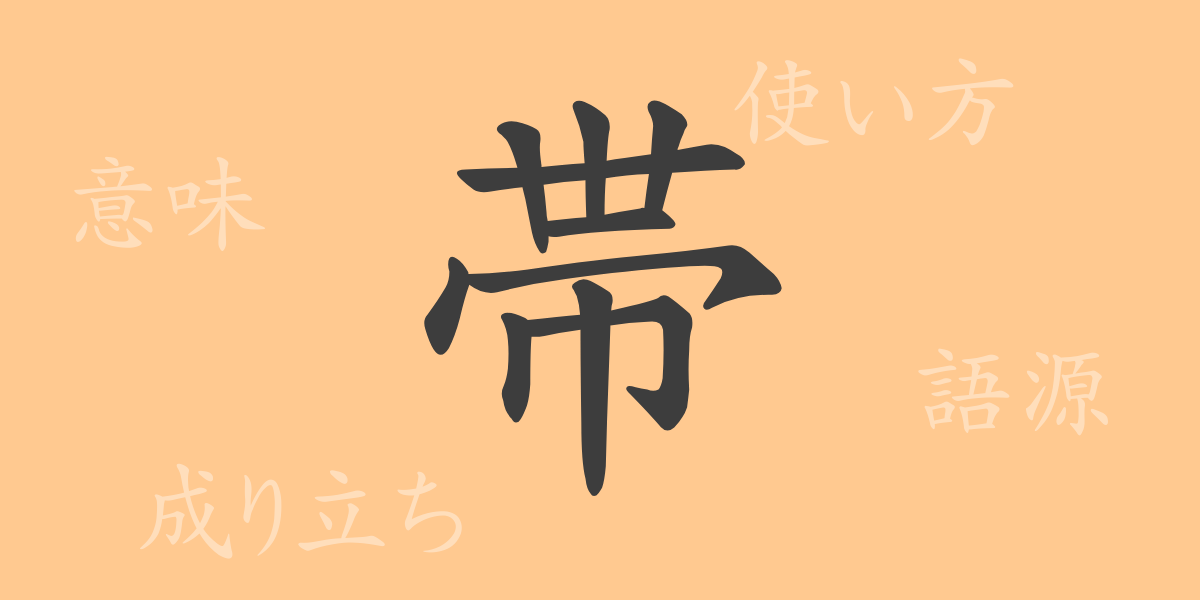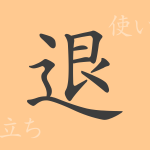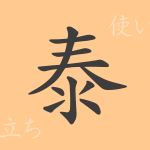Japanese kanji characters possess a profound expressive power. Among them, ‘帯’ (タイ) (tai), deeply ingrained in our everyday language, is commonly used in daily life. This article explores the hidden history, meanings, and usage of the kanji ‘帯’, delving into its fascinating aspects.
Origin of ‘帯’ (tai)
The kanji ‘帯’ originated from ancient Chinese oracle bone scripts. Initially depicted as a symbol for a cloth or leather belt wrapped around the waist, its form evolved over time to its current state. Today, this kanji is frequently used to represent things that bind or are worn, and its applications are extensive.
Meaning and Usage of ‘帯’ (tai)
The kanji ‘帯’ primarily means ‘to wrap around’ or ‘to connect the middle part of something.’ It is used to refer to belts worn around the waist, geographical zones like climatic belts, and even in contexts such as radio bands or frequency bands, denoting specific ranges.
Readings, Stroke Count, and Radical of ‘帯’ (tai)
Basic information about the kanji ‘帯’ is as follows:
- Readings: On’yomi is ‘タイ’ (tai), Kun’yomi is ‘おび’ (obi).
- Stroke Count: 10 strokes in total.
- Radical: ‘布’ (ぬのへん) (nu no hen), which is related to cloth.
Idioms, Phrases, and Proverbs Using ‘帯’ (tai) and Their Meanings
There are numerous idioms, phrases, and proverbs that include the kanji ‘帯’. For instance, ‘一帯一路’ (いったいいちろ) (ittai ichiro) represents economic cooperation, while ‘帯を解く’ (おびをとく) (obi wo toku) describes the act of relaxing. The proverb ‘帯に短し襷に長し’ (おびにみじかしつすにながし) (obi ni mijikashi tasuki ni nagashi) points out something that is inadequately suited for its intended purpose.
Conclusion on ‘帯’ (tai)
In this way, ‘帯’ is a kanji that is closely related to our lives, with a wide range of uses from clothing to geography to technical terms. Understanding the diverse meanings and applications of this character enhances our appreciation of the depth of the Japanese language. Knowing the world of ‘帯’ as a common kanji in Japanese enriches our understanding of language and communication.

























